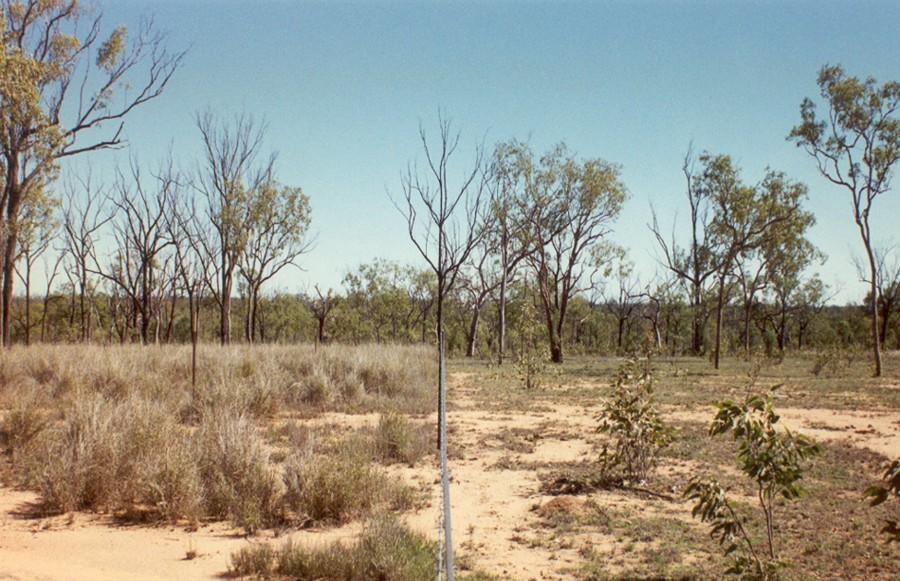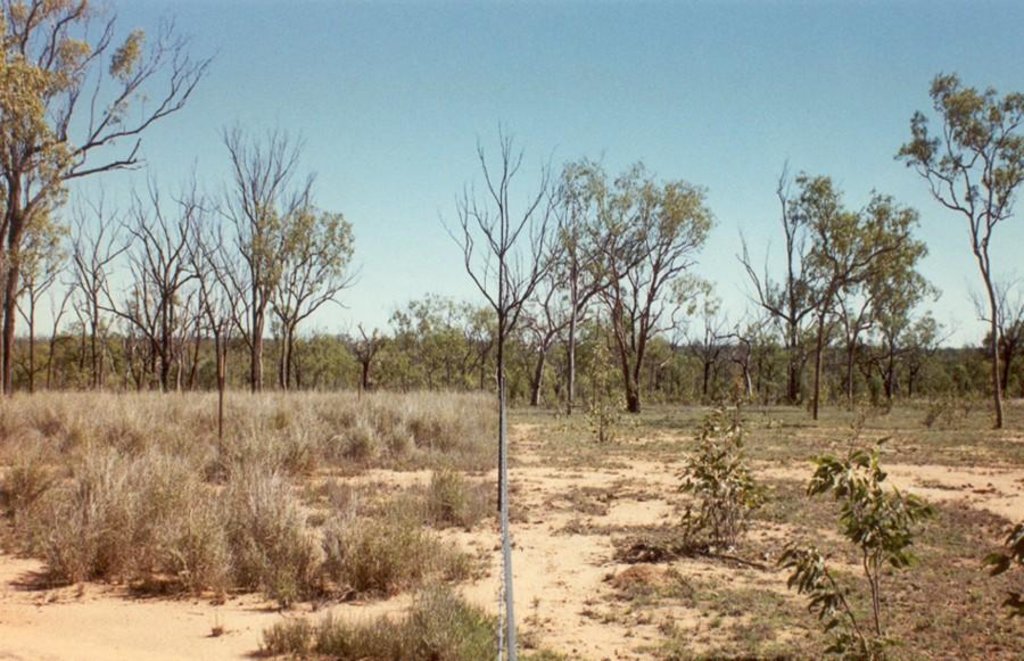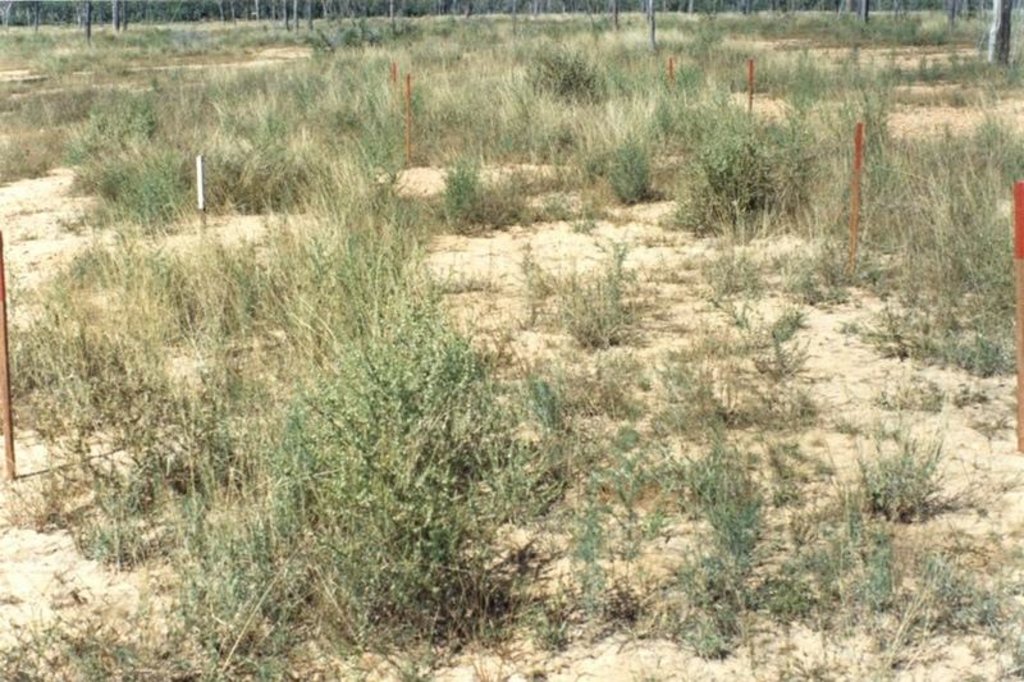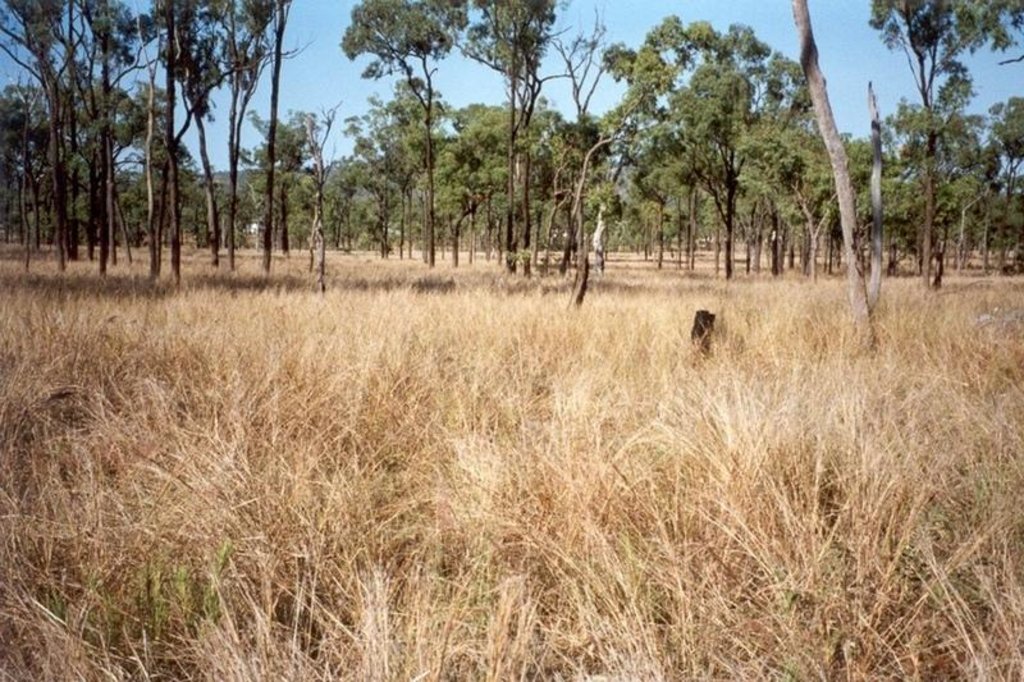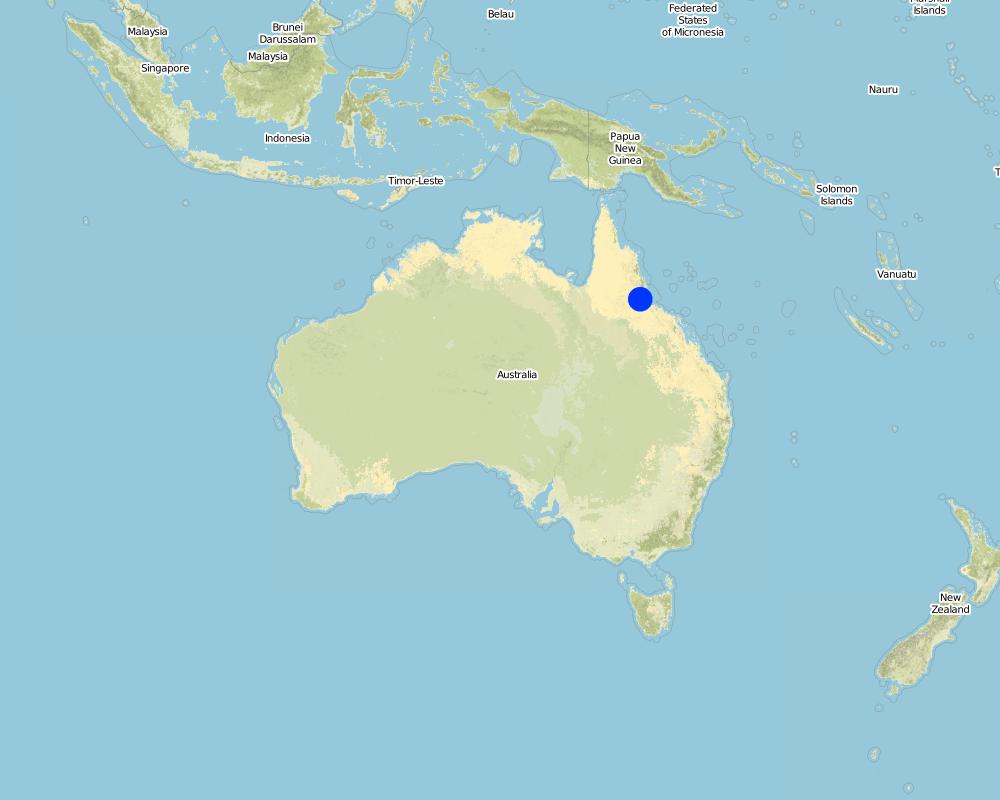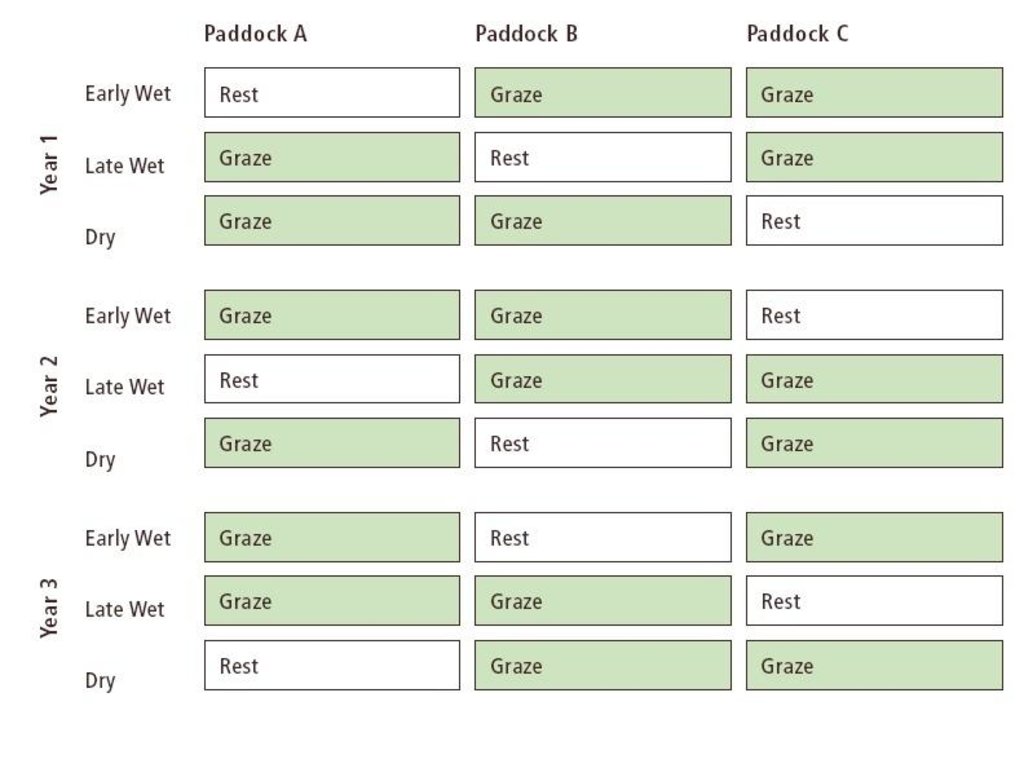Ecograze [Австрали]
- Шинийг нээх:
- Шинэчлэх:
- Эмхэтгэгч: Andrew Ash
- Хянан тохиолдуулагч: –
- Хянагчид: Fabian Ottiger, Alexandra Gavilano
technologies_1332 - Австрали
Бүлгүүдийг үзэх
Бүгдийг дэлгэх Бүгдийг хаах1. Ерөнхий мэдээлэл
1.2 Технологийг үнэлэх, баримтжуулах ажилд хамаарах мэдээлэл өгсөн хүмүүс, байгууллагуудын холбоо барих мэдээлэл
Технологи баримтжуулах/үнэлэх ажилд дэмжлэг үзүүлсэн төслийн нэр (шаардлагатай бол)
Book project: where the land is greener - Case Studies and Analysis of Soil and Water Conservation Initiatives Worldwide (where the land is greener)Технологи баримтжуулах/үнэлэх ажилд дэмжлэг үзүүлсэн байгууллага(ууд)-ын нэр (шаардлагатай бол)
CSIRO (CSIRO) - Австрали1.3 ВОКАТ-аар баримтжуулсан өгөгдлийг ашиглахтай холбоотой нөхцөл
Эмхэтгэгч болон гол мэдээлэгч хүн(хүмүүс) WOCAT аргачлалаар баримтжуулсан мэдээллийг ашиглахтай холбоотой нөхцлийг хүлээн зөвшөөрсөн:
Тийм
1.4 Технологи тогтвортой гэдгийг баталгаажуулах
Энэ технологийг газрын доройтлыг бууруулж, газрын тогтвортой менежментийг хангахад тохиромжтой гэж үзэж болох уу?
Үгүй
1.5 ГТМ Арга барилын Асуулга (ууд) руу хандах (ВОКАТ ашиглан баримтжуулсан)
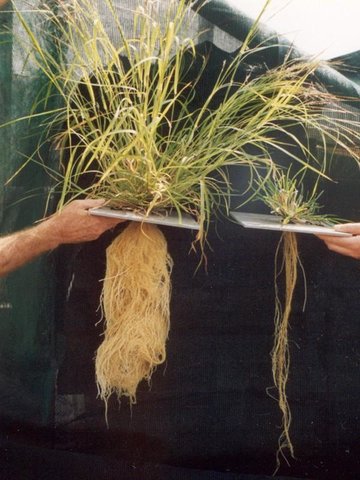
Development and promotion of Ecograze [Австрали]
Research-based development and promotion of Ecograze principles and practices through on-farm testing and demonstration.
- Эмхэтгэгч: Andrew Ash
2. ГТМ Технологийн тодорхойлолт
2.1 Технологийн товч тодорхойлолт
Технологийн тодорхойлолт:
An ecologically sound and practical grazing management system, based on rotation and wet season resting.
2.2 Технологийн дэлгэрэнгүй тодорхойлолт
Тодорхойлолт:
Open eucalypt woodlands cover approximately 15 million hectares in the semi-arid plains of north-east Australia, and support about a million head of cattle. Keeping these grazing lands productive and healthy demands good management, and getting the right balance between stock numbers and the forage resource is a considerable challenge.
Land in good condition has a healthy coverage of so-called ‘3P grasses’: native perennial, productive and palatable grasses, important to cattle and to the health of the landscape. Less palatable plants include annual grasses, native and exotic forbs and shrubs. The heterogeneity of the pasture resource results in uneven utilisation, and thus overgrazing in parts.
In order to prevent pastures in good condition from degrading, or to restore/improve deteriorated pastures, utilisation needs to be adjusted according to climate and the state of the ‘3P grasses’. In practice, the only means of manipulating pasture composition over large areas are grazing, resting from grazing, and burning.
The flexible Ecograze system includes wet season resting, and is based on the establishment of three paddocks with two herds within a rotational system. The key is that all paddocks get some wet season rest two years out of three. Wet season rests are divided into two phases: (1) The early wet season rest starts after the first rains in November/December and continues for 6-8 weeks, it is particularly good for perennial grass recovery; (2) the late wet season rest lasts until March/April and aids both seed set and vegetative recovery.
Average paddocks of around 3,000 ha in size are sub-divided into three relatively equal sizes, though some flexibility is required to balance variation in the productive capacity of different land types within the paddock. The paddocks are fenced and extra water points through polythene piping and additional water troughs, and where required, pumps are established. The return on investment can be realised within a few years.
The main management challenges are: (1) the timing and length of the early wet season rest, which depends on how effectively the early rains promote vegetative growth of perennial grasses, and (2) the movement of animals during the wet season. The number of stock movements are fixed - but the timing is flexible and should be responsive to the situation: the challenge is to learn to assess the pasture condition, read the situation, and schedule the timing and length of the rest period accordingly. The main criterion is the recovery state of perennial grasses.
2.3 Технологийн гэрэл зураг
2.5 Энэ үнэлгээнд хамрагдсан технологийг хэрэгжүүлсэн улс орон/ бүс нутаг/ байршил
Улс:
Австрали
Улс/аймаг/сум:
Queensland
Байршлын дэлгэрэнгүй тодорхойлолт:
North-eastern Queensland
Технологи өргөн дэлгэрсэн эсхийг тодорхойл:
- газар дээр жигд тархсан
Технологи газар нутгийн хэмжээнд жигд тархсан бол түүний эзлэх талбайг тодорхойлно уу (км2-аар):
10.0
Хэрэв талбайн хэмжээ тодорхойгүй бол талбайн хэмжээг ойролцоогоор тодорхойлно уу:
- 10-100 км2
Тайлбар:
Total area covered by the SLM Technology is 10 m2.
study terminated after 8 years (2000-2001).
The paddocks of an average size of around 30 km2 are subdivided into three paddocks of an average size of 10 km2. The technology is therefore documented on one of the subdivided paddocks. The 10 km2 is the area per subdivided paddock, each farm (localities) has 10 km2 (respectively 3*10km2) area, where the technology is applied.
Map
×2.6 Хэрэгжсэн хугацаа
Байгуулсан тодорхой оныг мэдэхгүй бол баримжаа хугацааг тодорхойл:
- <10 жилийн өмнө (саяхны)
2.7 Технологийн танилцуулга
Технологийг хэрхэн нэвтрүүлснийг тодорхойл:
- Туршилт/судалгааны үр дүн
Тайлбар (төслийн төрөл г.м.):
Meat and Livestock Australia initiated the project to improve the understanding of the effects of grazing, spelling, fire and climate on the condition and productivity of open eucalyptus woodlands in north-eastern Queensland.
3. ГТМ технологийн ангилал
3.1 Технологийн үндсэн зорилго (ууд)
- газрын доройтлыг бууруулах, сэргийлэх, нөхөн сэргээх
3.2 Технологи нэвтрүүлсэн газрын одоогийн газар ашиглалтын хэлбэр(үүд)

Бэлчээрийн газар
Бэлчээрийн мал аж ахуй:
- Ранч
- Cattle
Тайлбар:
Major land use problems (compiler’s opinion): Over the last 20 years there has been a decline in the condition of grazing lands in north-east Australia. The evidence is a decline of palatable, perennial, productive grasses (‘3P grasses’), reduced ground cover and an increase in sediment and nutrient movement into streams. As a consequence of economic pressures and over-optimistic expectations of good rains, stocking rates have often been too high.
Major land use problems (land users’ perception): same as above (combined)
Ranching: Yes
3.4 Усан хангамж
Технологи хэрэгжүүлсэн газрын усан хангамж:
- Байгалийн усалгаатай
3.5 Технологи ГТМ-ийн аль бүлэгт хамаарах вэ
- Ээлжлэх тогтолцоо (таримал ээлжлэн тариалах, уриншлах, өнжөөн тариалах)
- Бэлчээрийн мал аж ахуй ба бэлчээрийн газрын менежмент
3.6 Технологийг бүрдүүлэх ГТМ арга хэмжээ

Менежментийн арга хэмжээ
- М2: Ашиглалтын менежмент/эрчимийг өөрчлөх
Тайлбар:
Main measures: vegetative measures, management measures
Type of vegetative measures: scattered / dispersed
3.7 Технологид харгалзах газрын доройтлын төрөл

хөрс усаар эвдрэх
- Wt: Хөрсний гадаргын угаагдал
- Wg: Гуу жалгын элэгдэл
- Wo: Усны элэгдлийн дам нөлөө

хөрсний физик доройтол
- Pc: Хөрс дагтарших
- Pk: Гадарга дээр хагсах, хагарах

биологийн доройтол
- Bc: Ургамлан нөмрөг багасах
- Bs: Ургамлын чанар, төрөл зүйл, олон янз байдал буурах
Тайлбар:
Main type of degradation addressed: Wt: loss of topsoil / surface erosion, Wg: gully erosion / gullying, Wo: offsite degradation effects, Pc: compaction, Pk: sealing and crusting, Bc: reduction of vegetation cover, Bs: quality and species composition /diversity decline
3.8 Газрын доройтлоос урьдчилан сэргийлэх, сааруулах ба нөхөн сэргээх
Газрын доройтолтой холбоотойгоор Технологи ямар зорилго тавьсан болохыг тодорхойл:
- Газрын доройтлыг бууруулах
4. Техникийн нөхцөл, хэрэгжүүлсэн үйл ажиллагаа, материал ба зардал
4.1 Технологийн техник зураг
Техник тодорхойлолт (техник зургийн тайлбар):
The drawing refers to the ‘two herd/three paddock Ecograze system’. Paddock A is rested in the early wet season, while Paddocks B and C are grazed. Paddock B is then rested for the late wet season while Paddocks A and C are razed. Paddock C is then rested for the dry season and the next early wet season while Paddocks A and B are grazed. Paddock A is then rested for the late wet season and the rotational cycle continues in this fashion for the three years of the full rotation. Early wet season spelling should commence after the first significant rains in November/December and should continue for 6-8 weeks, depending on how effectively the early rains promote vegetative growth of perennial grasses. Late wet season rest typically last until March/April, depending on length of growing season.
Technical knowledge required for field staff / advisors: moderate; Technical knowledge required for land users: moderate
Main technical functions: improvement of ground cover, increase in organic matter, increase / maintain water stored in soil, improvement of soil structure
Secondary technical functions: control of concentrated runoff: retain / trap, increase in soil fertility
Scattered / dispersed
Vegetative material: G : grass
Grass species: 3P grasses (native perennial, productive and palatable grasses)
Change of land use practices / intensity level: rotational system, timing and length of resting period, timing of animal movement
Control / change of species composition: grazing, (wet season) resting from grazing and burning
Зохиогч:
Mats Gurtner
4.2 Материал болон зардалд хамаарах ерөнхий мэдээлэл
Үнэ өртөг, оруулсан хувь нэмрийг хэрхэн тооцсоныг тодорхойл:
- Технологийн нэгж тус бүр
Талбайн хэмжээ ба нэгжийг тодорхойл:
1 ha
Үнэ өртөгийг тооцоход ашигласан мөнгөн нэгж:
- Ам.доллар
4.3 Бий болгох үйл ажиллагаа
| Үйл ажиллагаа | Хугацаа (улирал) | |
|---|---|---|
| 1. | Paddocks first need to be surveyed to understand the various plant communities and soils | |
| 2. | Paddocks first need to be surveyed to understand the various plant communities and soils. | |
| 3. | Based on the survey and location of water points, and the most practical location for fences, a paddock design is developed: paddocks are subdivided into relatively equal sizes. | |
| 4. | Fencing the paddocks Material: metal barbed wire or plain wire for electric fences, steel fence posts, wooden or steel end assemblies (poles) to strain the fence, energisers (for electric fences). | |
| 5. | Provision of extra water points through polythene piping and additional water troughs - and where required, pumps. |
4.4 Бий болгоход шаардагдсан зардал, хөрөнгийн өртөг
| Зардлын нэр, төрөл | Хэмжих нэгж | Тоо хэмжээ | Нэгжийн үнэ | Зардал бүрийн нийт өртөг | Нийт дүнгээс газар ашиглагчийн төлсөн % | |
|---|---|---|---|---|---|---|
| Хөдөлмөр эрхлэлт | Labour | ha | 1.0 | 4.0 | 4.0 | 100.0 |
| Тоног төхөөрөмж | Tools | ha | 1.0 | |||
| Барилгын материал | others (specify): metal, wire, wood | ha | 1.0 | 6.0 | 6.0 | 80.0 |
| Технологи бий болгох нийт үнэ өртөг | 10.0 | |||||
| Технологи бий болгох нийт үнэ өртөг, ам.доллар | 10.0 | |||||
Тайлбар:
Duration of establishment phase: 48 month(s)
4.5 Арчилгаа/ урсгал үйл ажиллагаа
| Үйл ажиллагаа | Хугацаа/ давтамж | |
|---|---|---|
| 1. | Monitoring pastures and soils | |
| 2. | Mustering (gathering) and shifting (moving) livestock | |
| 3. | Monitoring pastures and soils. | |
| 4. | Repair fences (wire, poles, etc) |
4.6 Арчилгаа/урсгал ажилд шаардагдсан зардал, хөрөнгийн өртөг (нэг жилд)
| Зардлын нэр, төрөл | Хэмжих нэгж | Тоо хэмжээ | Нэгжийн үнэ | Зардал бүрийн нийт өртөг | Нийт дүнгээс газар ашиглагчийн төлсөн % | |
|---|---|---|---|---|---|---|
| Хөдөлмөр эрхлэлт | Labour | ha | 1.0 | 1.0 | 1.0 | 100.0 |
| Тоног төхөөрөмж | Tools | ha | 1.0 | |||
| Технологийн арчилгаа/урсгал үйл ажиллагаанд шаардагдах нийт үнэ өртөг | 1.0 | |||||
| Технологи арчилах ба урсгал ажлын нийт үнэ өртөг, ам.доллар | 1.0 | |||||
Тайлбар:
Current average paddock size is 3,000 ha - commonly 6 km x 5 km. To sub-divide the paddock into three requires two internal fences, each of 5.0 km. Costs of fencing and associated gates are about US$1,200 per km. Labour for fencing is also approximately US$1,200 per km (Note: while this looks expensive, because of the large paddock size, on a per hectare basis this is equivalent to US$ 4.0 per hectare).
5. Байгаль ба нийгмийн нөхцөл
5.1 Уур амьсгал
Жилийн нийлбэр хур тундас
- < 250 мм
- 251-500 мм
- 501-750 мм
- 751-1,000 мм
- 1,001-1,500 мм
- 1,501-2,000 мм
- 2,001-3,000 мм
- 3,001-4,000 мм
- > 4,000 мм
Агро-уур амьсгалын бүс
- хагас хуурай
5.2 Гадаргын хэлбэр
Дундаж налуу:
- хавтгай (0-2 %)
- бага зэрэг налуу (3-5 %)
- дунд зэрэг налуу (6-10 % )
- хэвгий (11-15 %)
- налуу (16-30 %)
- их налуу (31-60 % )
- эгц налуу (>60 %)
Гадаргын хэлбэр:
- тэгш өндөрлөг / тал
- нуруу
- уулын энгэр
- дов толгод
- бэл
- хөндий
Өндрийн бүслүүр:
- 0-100 д.т.д. м.
- 101-500 д.т.д. м.
- 501-1,000 д.т.д м.
- 1,001-1,500 д.т.д м.
- 1,501-2,000 д.т.д м.
- 2,001-2,500 д.т.д. м.
- 2,501-3,000 д.т.д. м.
- 3,001-4,000 д.т.д м.
- > 4,000 д.т.д. м.
Гадаргын талаархи тодорхойлолт ба бусад тайлбар:
Landforms: Also hill slopes (ranked 2) and ridges (ranked 3)
Slopes on average: Aslo moderate (ranked 2) and flat (ranked 3)
5.3 Хөрс
Хөрсний дундаж зузаан:
- маш нимгэн (0-20 см)
- нимгэн (21-50 см)
- дунд зэрэг зузаан (51-80 см)
- зузаан (81-120 cм)
- маш зузаан (>120 cм)
Хөрсний бүтэц (өнгөн хөрс):
- дундаж (элсэнцэр, шавранцар)
- нарийн /хүнд (шаварлаг)
Өнгөн хөрсөнд агуулагдах ялзмаг:
- дунд (1-3 % )
- бага (<1 % )
Боломжтой бол хөрсний бүрэн тодорхойлолт, боломжит мэдээллийг өгнө үү, жишээ нь хөрсний төрөл, хөрсний урвалын орчин/хүчиллэг байдал, катион солилцох чадавхи, азотын хэмжээ, давсжилт г.м.
Soil depth on average: Also Shallow (ranked 2) and deep (ranked 3)
Soil fertility: Low
Soil drainage/infiltration: Good (ranked 1) and poor (ranked 2)
5.6 Технологи нэвтрүүлсэн газар ашиглагчдын тухай мэдээлэл
Үйлдвэрлэлийн системийн зах зээлийн чиг баримжаа:
- худалдаа наймааны/ зах зээлийн
Бусад эх үүсвэрээс олох орлого:
- Нийт орлогын 10-50 %
Газар ашиглагчдын бусад шинж чанарыг тодорхойл:
Off-farm income specification: usually constitutes off-farm financial investments (eg shares in companies, investment properties, etc)
5.7 Газар ашиглагчийн технологи нэвтрүүлсэн газрын дундаж талбайн хэмжээ
- < 0.5 га
- 0.5-1 га
- 1-2 га
- 2-5 га
- 5-15 га
- 15-50 га
- 50-100 га
- 100-500 га
- 500-1,000 га
- 1,000-10,000 га
- > 10,000 га
5.8 Газар эзэмшил, газар ашиглах эрх, ус ашиглах эрх
- individual
Газар ашиглах эрх:
- түрээсийн хэлбэрээр
- хувь хүн
6. Үр нөлөө ба дүгнэлт
6.1 Технологийн талбайд үзүүлсэн нөлөө
Нийгэм-эдийн засгийн үр нөлөө
Үйлдвэрлэл
тэжээл үйлдвэрлэл
тэжээлийн чанар
Орлого, зарлага
тухайн аж ахуйн орлого
эдийн засгийн ялгаат байдал
ажлын хэмжээ
Нийгэм-соёлын үр нөлөө
ГТМ/ газрын доройтлын мэдлэг
Экологийн үр нөлөө
Хөрс
хөрсний чийг
хөрсөн бүрхэвч
хөрс алдагдах
6.2 Технологийн талбайн гадна үзүүлсэн үр нөлөө
голын адагт үерлэх
голын адагт лаг шавар хуримтлагдах
салхиар тээвэрлэгдэх хурдас
6.4 Өртөг ба ашгийн шинжилгээ
Бий болгох зардалтай харьцуулахад ямар ашиг өгсөн бэ (газар ашиглагчийн бодлоор)?
Богино хугацаанд эргэн төлөгдөх байдал:
сөрөг
Урт хугацаанд эргэн төлөгдөх байдал:
эерэг
Арчилгаа/урсгал зардалтай харьцуулахад ямар ашиг өгсөн бэ (газар ашиглагчийн бодлоор)?
Богино хугацаанд эргэн төлөгдөх байдал:
бага зэрэг сөрөг
Урт хугацаанд эргэн төлөгдөх байдал:
маш эерэг
6.5 Технологи нэвтрүүлэлт
Боломжтой бол, тоогоор илэрхийл (өрхийн тоо эсвэл бүрхэх талбай):
15005
Технологи нэвтрүүлсэн хүмүүсээс хэд нь өөрийн хүчээр технологийг хэрэгжүүлсэн бэ, өөрөөр хэлбэл гадны тусламж дэмжлэг авалгүйгээр?
- 0-10%
Тайлбар:
60% of land user families have adopted the Technology with external material support
5 land user families have adopted the Technology with external material support
5% of land user families have adopted the Technology without any external material support
15000 land user families have adopted the Technology without any external material support
There is a little trend towards spontaneous adoption of the Technology
Comments on adoption trend: There are indications that around 700 (of a total of 15,000) farmers across northern Australia have already adopted some aspects. Surveys indicate spontaneous adoption beyond the region as well. In time a large number of farmers are expected to adopt it.
6.7 Технологийн давуу тал/боломжууд
| Эмхэтгэгч, бусад мэдээлэл өгсөн хүмүүсийн өнцгөөс тодорхойлсон давуу тал/боломжууд |
|---|
|
Increased perennial grass cover, improved pasture productivity, increased animal carrying capacity and associated increased profit How can they be sustained / enhanced? Wide and long-term adoption of Ecograze system. |
|
Improved soil cover reduces erosion and sediment flow into streams and dams How can they be sustained / enhanced? Manage pasture condition through Ecograze to maintain ‘3P grasses’. |
|
Greater stability of forage supply leading to less problems and less stress in farm management How can they be sustained / enhanced? Wide and long-term adoption of Ecograze system. |
|
Soil carbon reserves maintained/improved How can they be sustained / enhanced? Wide and long-term adoption of Ecograze system. |
|
Plant biodiversity protected How can they be sustained / enhanced? Wide and long-term adoption of Ecograze system. |
6.8 Технологийн дутагдалтай/сул тал/аюул болон тэдгээрийг хэрхэн даван туулах арга зам
| Эмхэтгэгч, бусад мэдээлэл өгсөн хүмүүсийн өнцгөөс тодорхойлсон сул тал/ дутагдал/ эрсдэл | Тэдгээрийг хэрхэн даван туулах вэ? |
|---|---|
| Adoption of technology needs long-term approach to accommodate for slow rate of change by ranchers | Continue to demonstrate the advantages of the technology. |
| Implementing rotational grazing incurs (moderate) investment costs in the form of fencing and new water points | Investigate government subsidies and educate about long-term economic benefits. |
7. Ном зүй ба холбоосууд
7.1 Мэдээлэл цуглуулсан арга/эх үүсвэр
7.2 Ном, хэвлэлийн ишлэл
Гарчиг, зохиогч, он, ISBN:
Ash A, Corfield J and Taoufik T (undated) The ECOGRAZE Project: developing guidelines to better manage grazing country. CSIRO, Meat and Livestock Commission and Queensland Government
Гарчиг, зохиогч, он, ISBN:
Tothill JC and Gillies C (1992) The pasture lands of northern Australia: their condition, productivity and sustainability Occasional Publication No.5, Tropical Grassland Society of Australia, Brisbane
Гарчиг, зохиогч, он, ISBN:
Tothill J and Partridge I (1998) Monitoring grazing lands in northern Australia - edited by Occasional Publication No.9, Tropical Grassland Society of Australia, Brisbane
Холбоос ба модулууд
Бүгдийг дэлгэх Бүгдийг хаахХолбоосууд

Development and promotion of Ecograze [Австрали]
Research-based development and promotion of Ecograze principles and practices through on-farm testing and demonstration.
- Эмхэтгэгч: Andrew Ash
Модулууд
Модуль байхгүй байна


